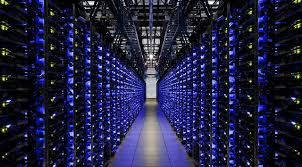Paul Barsch| Smartdatacollective
In a very competitive macro-economic climate, companies seek to reduce costs and drive those savings towards either the bottom line or re-purpose savings towards innovative projects. Cloud computing is often seen as one such avenue towards cost reductions as companies can ultimately reduce capital expenditures and data center operating costs. However, as good as the concept of “cost savings” sounds, you might be surprised to discover that according to one analyst firm, cost reduction isn’t the primary driver for cloud computing.
oo many under-utilized data marts and application servers and too many wasted kilowatts. That’s what consortiums like Energy Star say as they report most corporate servers are only utilized 5-15%of the time. Besides wasted energy, companies are saddled with a poorly utilized asset that’s still costing precious IT dollars in maintenance and possibly software subscriptions.
Cloud computing, then, can often ride to the rescue in terms of creating shared pools of system resources via virtualization technologies. This in turn helps reduce the number of servers needed, slashes application licenses, and ultimately trims power and cooling costs.
While cost savings are no doubt important, a recent analyst survey cites the primary driver for CIOs to approve cloud computing are: “(delivering results to the business) better,” followed by “(delivering results to the business) faster.” Cost savings comes in a distant third.
That’s because global product lifecycles are speeding up as companies adjust to niche consumer demands, and more nimble/agile competitors.
For evidence of faster product lifecycles, see GE appliances. In an Atlantic magazine article, GE appliance manager Lou Lenzi says that a refrigerator model design was formerly good for at least 7 years before a complete product refresh was necessary. Now because of accelerated product cycles, models are only good for 2-3 years as customers regularly clamor for new features, colors, styles and models such as “$3000 smart refrigerators.”
Cloud computing can help companies respond to faster product cycles. With cloud, customer demands can be met, almost instantaneously because analytic resources for product and customer analysis are “at the ready” and can grow and/or shrink as business demands. No more waiting for capital budget refreshes, or IT to find cycles to accommodate immediate business needs. And best of all, these resources are generally available on a pay-per- use or subscription basis, so they’re easier to fund from OPEX budgets.
And user friendly cloud self-service options help enable business managers to create analytic development “laboratories” where they can carve out system resources to work on special projects, test out new theories, or collaborate with product, marketing and R&D teams on a global basis.
In short, cost savings are a very important aspect for CIOs, but not always the primary driver for cloud adoption. CIOs then, fundamentally seek cloud computing options to help them align more closely to business user demands and better meet customer needs. Indeed, with shrinking product lifecycles, the ability to source immediate compute, storage and analytics—for faster business results—could mean the difference between an extremely profitable or disastrous quarterly result.













